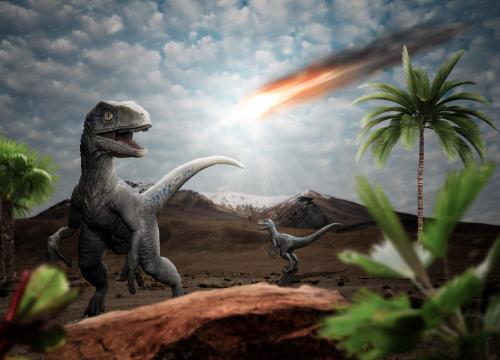Dr. Peter Martin presented on his research in and of New Guinea. In particular, when did it form and how it impacted historical climate change.
This webinar is part of the CIRES/NOAA Science-At-Home series.
Goals Header
About the Presenter
Dr. Peter Martin is a CU Boulder postdoctoral researcher in the Department of Geological Sciences. While majoring in chemistry, he discovered a passion for Earth Science (especially geochemistry) that led him to double-major in chemistry and geology and then to head to Caltech for graduate school in the geosciences. His main specialty is geochronology, the study of the age of rocks and the events that affect them. For his PhD, Peter worked on the history of climate and liquid water on Mars using data from the Curiosity rover. Since then, he has shifted his focus to Earth, working on long-timescale climate change at home. Unlike the human-caused climate change we’re all familiar with, he works on how and especially when the climate has changed over many millions of years as the Earth undergoes natural changes.
Additional Learning Resources
Pre-K: Rocks are the basis for today's talk and, fortunately, they are available everywhere! A rock hunt in your yard or a park to find how many different types of rock you have (classified into whatever categories you like: color, shape, sparkliness) is a great place to start. You can also use these instructions to make your own rock using glue and materials from outside and examine the properties of your rock up-close! OR use edible materials to create a delicious Rock Buffet.
Igneous, sedimentary and ....? For those of you who would like a little refresher on what the three types of rocks are and how to tell them apart, we offer this catchy song and video. You can also visit the Geology Kitchen to watch this video on the three (edible) types of rocks.
K-5: We also learn a lot about the impact of carbonate rocks on the Earth's climate system in this talk. Carbonates are a type of sedimentary rock that are a very important part of the Carbon Cycle, which you can learn more about with this visualization.
Carbon is critical for our rock cycle and for the life on our planet. An imbalance in the carbon cycle, however can have negative consequences. Too much carbon dioxide in our atmosphere can mean changes in ocean water, affecting ocean life, which you can explore with this series of activities from the University of Washington's VirtualUrchin on Ocean Acidity (it's got some chemistry and concepts that are for older kids, but you can gloss over the details for younger kids).
6-8: Carbonate rocks record all kinds of useful information for understanding Earth's climate history and that's why the Deep Sea Drilling Project has been collecting samples (known as sediment cores) from around the world for over 40 years! What do these cores look like and what can they tell us? Check out this activity using images of cores from different oceans, part of the Earth Exploration Toolkit, to learn about how scientists interpret this amazing data set!
Play around with the Building your own Earth simulation from the University of Manchester and see how modern, ancient and even alien worlds compare (be sure to "view climate model" to see how the different parts of the system affect the whole).
9-12: Increasing sea-levels are especially impactful for people and other organisms that live on islands like New Guinea. Check out Science Friday's series of activities and videos on Real Estate Hunting for the Climate Apocalypse to learn more about how different parts of our planet will be affected. Then check out The Lifestyle Project from the Science Education Resource Center for ideas how to map your ecological footprint and find ways to make small (or large) changes that can help reduce climate impacts.

